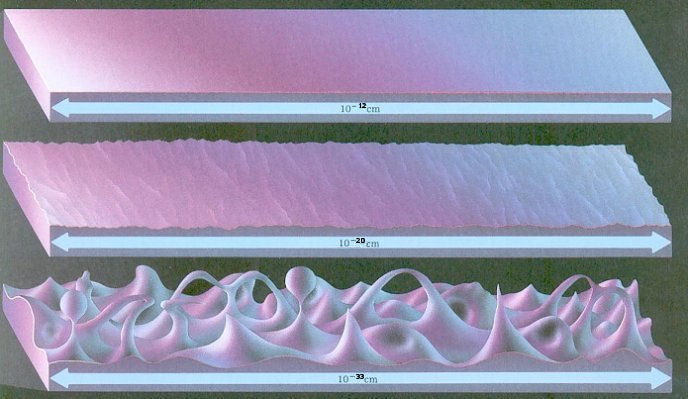
10-30 cm.; and at the scale of the Planck length space becomes a froth of probabilistic quantum foam (as shown in the diagram) and the notion of a simple, continuous space becomes inconsistent. According to the latest idea in superstring theory, the space at such small scale cannot be described by the Cartesian coordinates, x, y and z; it should be replaced by "noncommutative geometry", where the coordinates are represented by non-diagonal matrix. This is essentially the expression of uncertainty principle in quantum mechanics.



